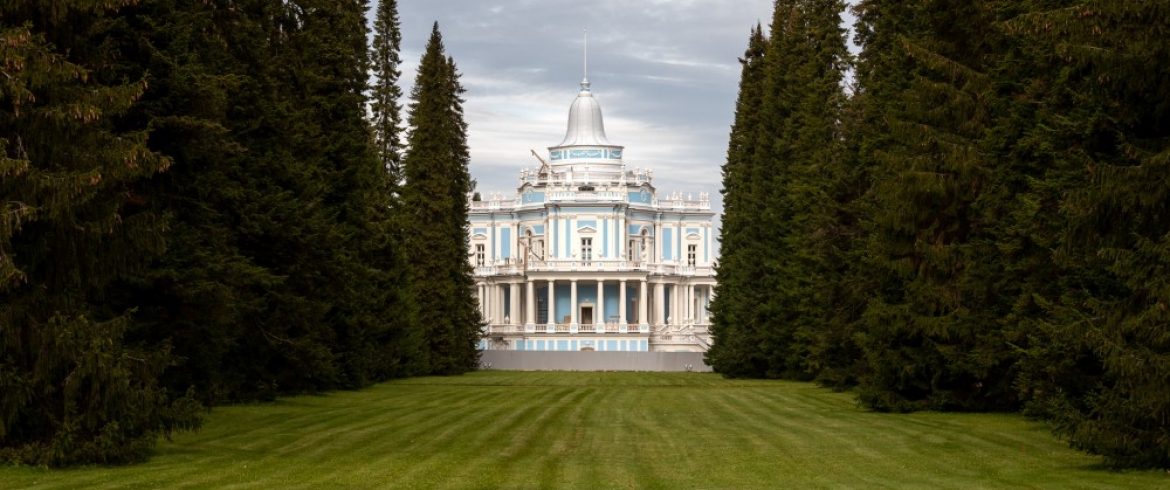Музей
Sliding Hill Pavilion

Built by architect Antonio Rinaldi in 1762-74 in Oranienbaum’s Upper Park, the Sliding Hill Pavilion is Russia’s only entertainment facility of its kind to have survived since the 18th century.
Originally, the complex of the Sliding Hill consisted of the pavilion itself, its sliding slopes, and roofed galleries/colonnades stretching for a total of 532 meters. The coasting site was located at an altitude of 20 meters. The sophisticated engineering and technical construction of the Sliding Hill had one straight and three wavy wooden ramps, with their height gradually decreasing and usually completed by inertia; as well as the three tracks: the central one for sliding, and the side ones for the lifting of carriages.
The carved gilded carriages for coasting in the shape of "triumphal chariots, gondolas and saddled animals" were designed by the prominent sculptor and engineer Andrei Nartov.
The Sliding Hill remained in use until 1801 when its disintegration became visible. In 1813, the colonnades eventually collapsed, and in the late 1850's, the ruins were dismantled.
Each detail in the pavilion’s interiors is unique. The round hall is decorated with paintings, stucco and gilded works by Russian and Italian masters. The floor is faced with artificial marble of pale-blue, pink-blue and yellow-green tones. The ornament of the floor echoes with the paintings on the walls and on the dome. A true piece of art is the Porcelain Cabinet with its allegoric sculptures created in 1772-74 at the Meissen manufactory by Johann Kändler.
During WWII, the pavilion was seriously damaged. After restoration by M. M. Plotnikov, who re-created its interiors and architectural components, the pavilion was unveiled for public in 1959.
In 2009, a new stage in the monument’s restoration was begun, with many important architectural and historic details awaiting recreation. Now that the project is complete, the pavilion invites guests to enjoy its beauty.